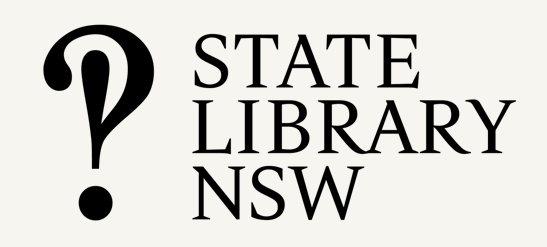Peta Harding (Executive Branch Manager, Libraries ACT) joined the NSLA Board in 2024, taking up leadership responsibility for the nine public library branches in that jurisdiction as well as the important ACT Heritage Library. In this interview, Peta takes the time to reflect on her career path, the ACT Heritage Library, and possible future directions as NSLA looks to a refreshed strategic plan from 2026 onward.
Tell us about your career path, and your role.
My role is the Executive Branch Manager of Libraries ACT. I provide the overall leadership and strategic direction for library services under the remit of the ACT Government.
My career path would be the very epitome of ‘non-linear.’ Although a very enthusiastic library user when I was younger, at no point did I think I would ever have a career in libraries. I obtained a BA (Communications) degree from the University of Newcastle in 2003 with plans to work in marketing or PR, but after subsequent years travelling to various parts of the world—including a 4 month stint as a lifeguard at a Jewish summer camp in the US—I made my way to the nation’s capital where I thought I would join the Australian Federal Police. Once here though I very much ‘fell’ into the public service, starting my public service career as an Executive Assistant in the Commonwealth.

My first public service experience was not one that I would wish on anybody, and I learned very early on about the type of leader I never wanted to be: this experience shaped me in ways that I’m only just realising now as a Senior Executive myself. Thankfully I found my feet with the National Water Commission, moving from Executive Assistant, to Executive Officer and Parliamentary Liaison. A career change following the birth of my eldest son saw me move into the world of Learning and Development, something which remains a passion of mine to this day. I worked for the Australian Institute of Management (AIM) / Centre for Public Management (CPM) where I pretty much became a sponge, absorbing information and learning about organisational psychology, organisational development, leadership and management, coaching and mentoring, people strategies and more. It was actually through my work with AIM that I learned about the Transport Canberra and City Services (TCCS) Directorate, where Libraries ACT sits. An opportunity came up in the TCCS Learning and Development Team, and I was fortunate enough to secure the position as their Assistant Director in 2020.
Fast forward two years and I became the HR Business Partner for Transport Canberra and Business Services within the Directorate, of which Libraries ACT is one of the business units in that group: and I’ve been hooked on libraries ever since. Initially brought in to contribute to the development of our 2030 strategy—which will be released later this year—I was then embedded on a more regular basis to understand the work that libraries do, the complexities and challenges with operating a 7-day service from an HR and industrial relations perspective, and supporting the leadership team through a period of intense change. When it was announced that my predecessor was moving on, I had grown to understand the underpinning value, importance and role for libraries in fostering connection, social cohesion and providing free, uninhibited access to information. I realised that was a legacy I wanted to be part of and was appointed as the permanent Executive Branch Manager in May 2024. I rely on my communication, HR and learning and development skills every single day, and relish the opportunity to leverage these strengths in championing the work of Libraries ACT.
So very much the definition of ‘non-linear!’
Other NSLA Directors are responsible for one institution: what challenges and opportunities are unique to you as the executive of a library service?
When people think of Canberra, they tend to think of politicians, parliament house, national institutions and the Federal Government. What is often overlooked is that the Territory is self-governed, meaning we have our own public service, which is responsible for delivering both the State and Local Government services that are present in other states across Australia. This means that Libraries ACT is the only provider of public library services in the nation’s capital: we do this through nine public library branches of different shapes and sizes. three of our branches are joint-use, shared with local colleges (institutions for years 11 and 12 in the ACT). We also have the ACT Heritage Library which is the ACT’s collecting archive and reference library, essentially performing the State Library functions for the ACT.
The diverse, experienced and passionate Libraries ACT team serves a population of approximately 475,600 people. We attract around 1.4million visitors each year, and process over 2.6million loans.
One of the key challenges for Libraries ACT is differentiating ourselves from the ‘Federal’ Canberra within the community, yet at the same time undertaking the same functions, having the same responsibilities and being at the same table as our National and State colleagues through NSLA. There is no legislation or Act in the ACT the formalises the varied role libraries play in the Canberra community, so we often find ourselves working twice as hard just to be seen. What we’re seeing now is that as the role of libraries has changed, the approach to resourcing and our service model/offering hasn’t changed also, and we’re finding ourselves in the unenviable position of closing public branches on an increasingly regular basis. In a positive recent development, a resolution was passed at the Legislative Assembly in March that called for increased focus and exploration on what supports are needed to ensure a thriving and flourishing library service in Canberra. This has aligned with the establishment of an Independent Working Group who have been tasked with making recommendations to Government on a sustainable operating model for Libraries ACT.
Tell us about the special role of the ACT Heritage Library (and do you have a favourite item in the collection?)
Charged with collecting, preserving, documenting and making available Canberra’s heritage and history, the ACT Heritage Library (ACTHL) is an untapped jewel of the ACT Government. Its impressive and varied collections form part of the national documentary of life, times and history of Canberra. There are a wealth of opportunities to increase awareness of the work ACTHL does.
I don’t have a favourite item in the collection per se, but one of my favourite things about ACTHL is that the team established, and continues to maintain, the first UNESCO Memory of the World Knowledge Centre in the southern hemisphere. That is no small feat for a small team, and I can’t help but be moved by what the Knowledge Centre provides to the community, especially those who have made Canberra their home from other countries. This gives an avenue for our diverse community to see themselves in the ACTHL collection and I don’t know that the collective impact of that can really be measured: but it’s wonderful to see.
Where do you see NSLA in five years’ time? What will we be working on?
Well if the last 18months has shown me anything it is how quickly things can change. Five years sounds so far and yet so close at the same time. I think we’ll be seeing AI used more regularly through our institutions, but still be exploring what it can do, and what this means. Especially for our collections both in terms of how we maintain them, but also how people access them: I think there can be some huge accessibility wins. I see a continuing focus on First Nations, as our institutions by their very nature play such a critical role in supporting reconciliation, truth telling and closing the gap. Reflecting on the most recent IFLA Trend Report, I also think NSLA has a role to play in the trust and connection spaces, working on demonstrating and championing for our institutions in a way that resonates with the community of the day and showing them what a trusted and connected service looks like.










